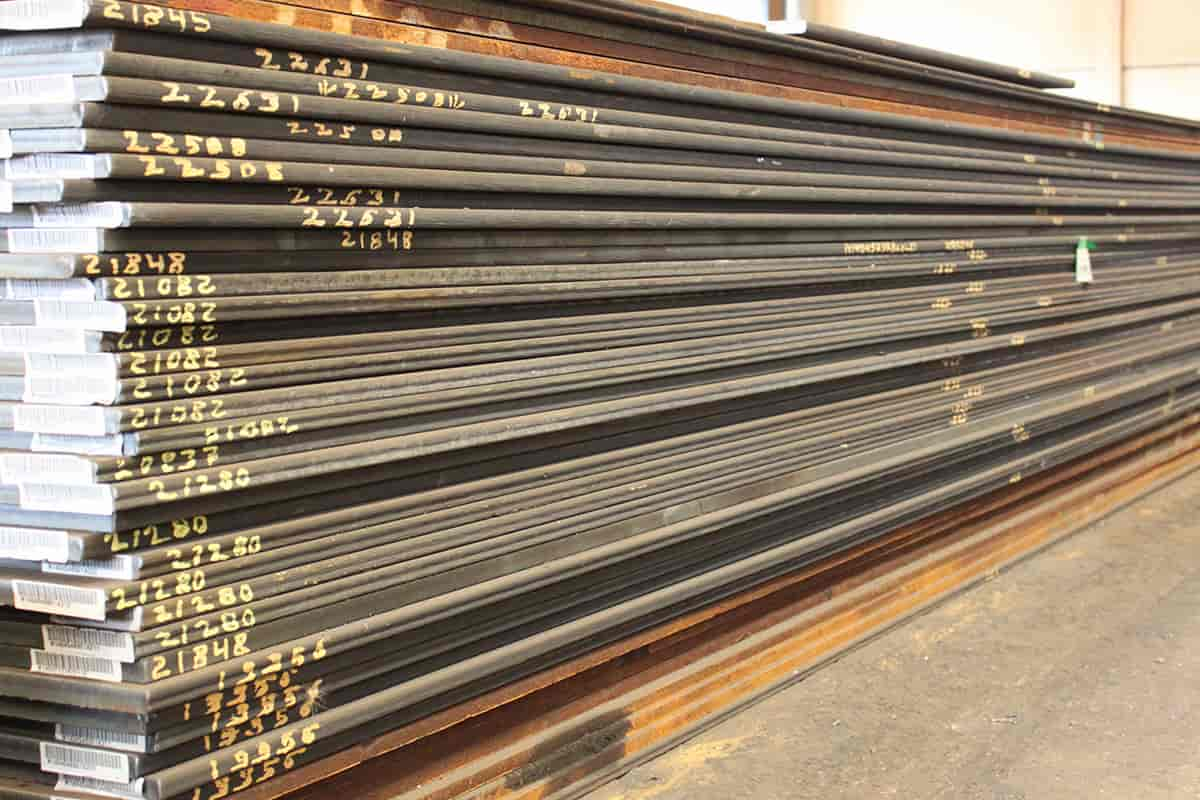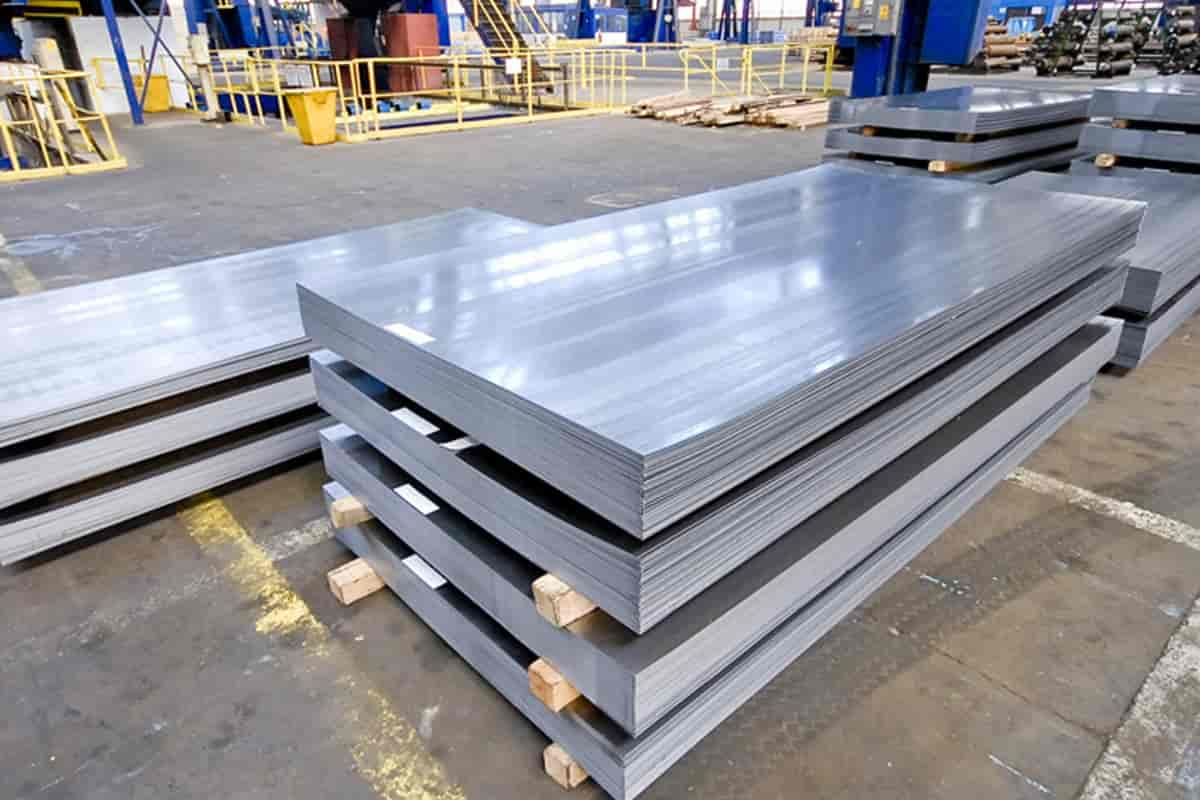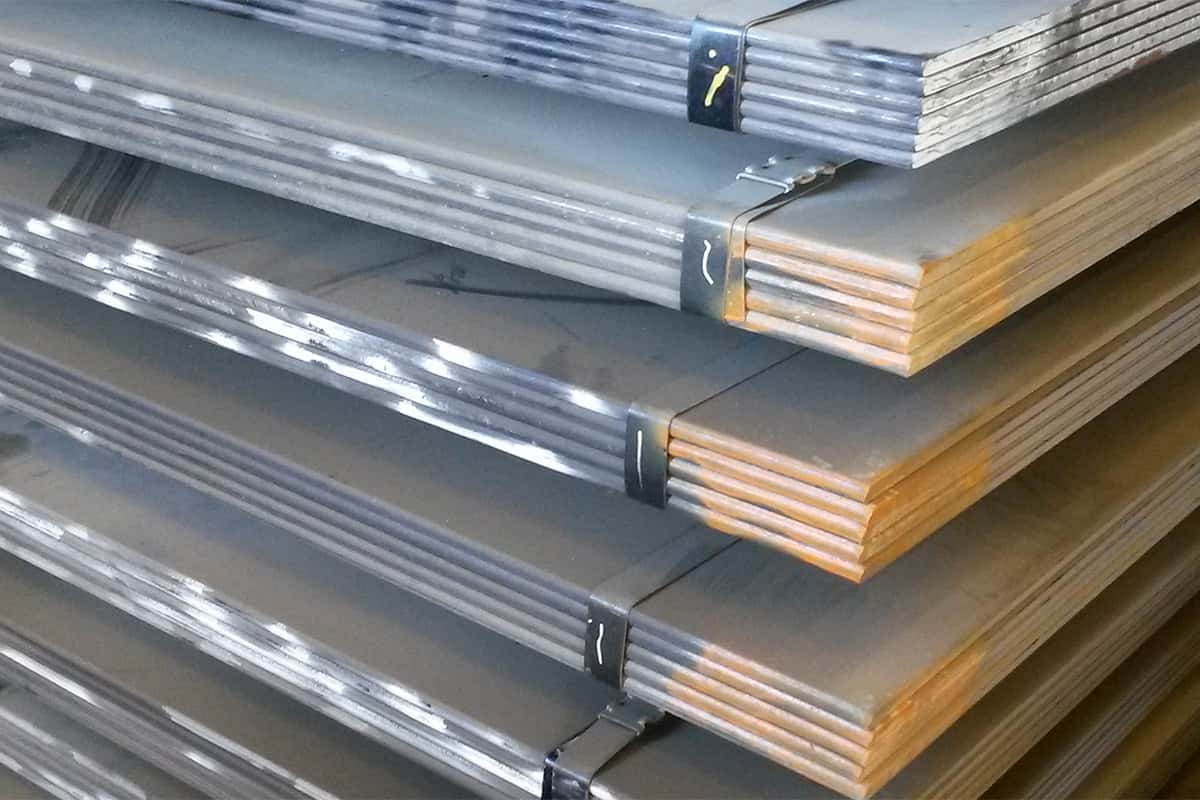Production and sale of steel sheets in different sizes and thicknesses. The thickness of the steel sheet is defined as about one millimeter to more than 50 millimeters. Thin steel sheets are divided into 2.1 to 75.2 mm, medium steel sheets from 3 to 7.4 mm, and thick steel sheets from 5 to 200 mm.
A steel sheet is a flat, flat surface, usually made of steel, rolled from a plate. Tin plates are named according to their production type, which are:
American ASTM standard
Russian goose standard
Steel sheet is used in the construction industry, production facilities and equipment, bridge construction, rebar columns and other industries.
This metal product is divided into different types, including boards, rib plates, pickled plates, oil plates, colored plates, galvanized plates, etc. Thick plates are mostly used to make large pipes and API pipes.
Over the past 40 years, there have been many changes in the way oil and gas transmission lines are designed, and the trend has been to use thicker pipes that can withstand higher pressures to improve transmission efficiency.
For this reason, the need to use more durable steel with high toughness has increased. High resistance and toughness allow the transfer of larger amounts of oil and gas in a shorter time.

API steel is widely used in shipbuilding and in the construction of thick API pipelines for oil and gas transmission lines. These steels are essentially carbon-manganese steels with higher strength by adding small amounts of microalloying elements.
Specifications for the construction of oil and gas pipelines are standardized by the American Petroleum Institute. High yield strength, high toughness, good relative tensile and low conversion temperature of these steels are positive property.
API tube specifications of the piping industry have increased significantly in the last 30 years due to advances in materials. The most important issue in oil and gas pipelines is greater flow in the shortest possible time.
To meet this requirement, pipeline steel must have high strength and toughness. Seamless pipeline steel is manufactured and used for transportation of oil and gas.
Steel tube or pipe transfer made to API 5L and CSA specifications and with minimal yield stress is named in ksi. In the process of welding of these tubes, first the sheet is converted to a cylinder and its longitudinal or spiral seam is welded by one of the process of resistance welding, welding process, fusion welding and two-way submerged arc welding.
With growing demand for oil and gas in urban areas and industries, efficient and optimal transmission of production to consumption needs complex and wide mechanisms.
Moreover, the natural gas produced in many cases must travel long distances to reach the consumption site. Thus, given that pipelines are very convenient, cost effective and safe for transporting natural oil and gas at high pressures. Special attention should be paid to the design and production of pipelines, installation and maintenance.
Inter-city gas transmission system uses large diameter steel tubes (containing high pressure gas ۱۰-۱۵MPa). Under such high working pressure, the structure should be in conditions favorable to safety and perfection.

In some degrees of these steels, small amounts of neobium, aluminum, vanadium and titanium alloying are added to increase strength. These grades are called low-strength alloy steels.
In addition to having minimal electrical resistance, the steels must have excellent weldability and high toughness. One of the steels used in the construction of oil and gas pipelines and standardized by the United States Petroleum Institute (API) are API steels. The proper strength, high weldability, high impact resistance and low ductile fracture are the main properties of these steels.
The introduction of API TRACHEA is because the natural gas resources discovered so far are located in remote areas, natural gas can only be obtained through pipelines.
Thus, the 21st century energy supply system requires high-energy and low-cost pipes. Iran’s known natural gas reserves hold 176 billion barrels of crude oil.
This figure is significant when compared to the country’s crude oil reserves, which stand at 136 billion barrels. Iran has 15.5 percent of its natural gas and is the second largest producer of natural gas in the world, after Russia.
API X۶۵ and API X۷۰ steels are used for natural gas transportation pipelines in Iran. So, it is necessary to know the mechanical properties (toughness, yield strength, tensile strength, etc.), microstructure, and other related information about these two materials.
During the past 40 years the pipe-making technology, the traditional hot-rolled and normalization technique in the mid-1970s became the thermo-mechanical (TMP) process. By using this method, the API X۷۰ steel is obtained by adding Niobium and Vanadium microalloy and reducing the carbon content.

Then in the 1980s, to achieve higher grades, Japanese researchers adopted a method for rapid post-rolled cooling that improved the steel microstructure and decreased the carbon content. The increasing trend of using high strength steel is shown in the diagram below.
High quality tubes made of special material allow us to increase the gas pressure in the tubes and use tubes with large diameter and thinner wall thickness for a certain amount of gas transmission. Therefore, high quality pipelines can lower the cost of gas transportation or pipeline costs. Advantages and Application of API Pipe
Oil, gas and water can be used in long pipelines due to low cost
pipeline diffusion resistance
Can be used in acidic systems
Introducing API standards are API standards standards of the American Petroleum Institute. The purpose of the standard is to provide the standard parameters for oil and gas pipelines.
This standard describes the parameters related to high strength steel, such as chemical composition, yield stress, fracture strength, welding conditions, manufacturing process, how mechanical tests are conducted and so on.
Pipeline Type API
According to API standard, A25, A, B, X42, X46, X52, X56, X60, X65, X70, X80 steel grades are. PSL1 level supports A25 level to X70 level, PSL2 level supports B to X80 level.
All API levels are identified by letters and numbers. This number represents the minimum yield strength for this steel based on the units of the Empire. It is important to note that this rule does not include levels A and B.



